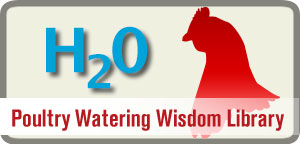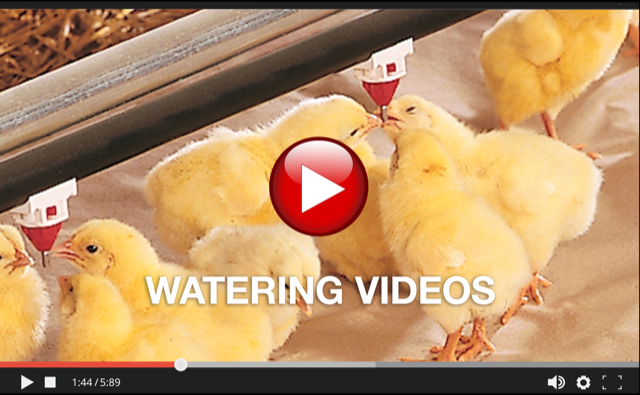How to monitor litter conditions
How do you determine if your litter has the right (20 to 25 percent) moisture content? Ziggity’s tried and true litter test involves simply picking up a clump of litter under a watering line and squeezing it. If the litter clumps together and stays together in a ball, the litter is too wet. If the litter instantly dissolves in your hand, it’s too dry. If the litter initially clumps but then starts to disintegrate, it’s probably at the 20 to 25 percent level. For the other situations, you need to increase (for too dry) or decrease (for too wet) the line water pressure and then retest in 24 hours.
Why it’s so important
One big reason for avoiding wet litter in managing your poultry watering system is to prevent excessive ammonia release. Ammonia is caused by the interaction of water with bird droppings, and the consequence of litter that is too wet is high ammonia levels that can be bad for both the birds and the humans who work with them.
People usually can detect ammonia at around 15 parts per million (ppm). However, prolonged exposure desensitizes the nose. Some growers who have worked in the poultry house environment for years cannot detect ammonia at 50 ppm, a level considered threatening to human health.
 The U.S. Environmental Protection Agency says humans should not be exposed to 25 ppm for eight hours or longer and exposure to 35 ppm should not exceed 15 minutes.
The U.S. Environmental Protection Agency says humans should not be exposed to 25 ppm for eight hours or longer and exposure to 35 ppm should not exceed 15 minutes.
At the same time, ammonia is at its strongest concentration at litter level, where the birds are. Here, ammonia will dissolve in the fluid around the birds’ eyes, causing irritation. In greater concentrations, the birds can go blind.
Even at a level of 5 ppm (undetectable to the human nose), the cilia — hair-like projections that trap dust and particles — in the bird’s trachea are destroyed by ammonia. As this happens, the trachea lining erodes and becomes susceptible to respiratory viruses or bacteria, which pose a major threat to poultry operations.
Such ammonia-encouraged diseases may show few or no symptoms, so flock performance can be significantly hurt before the producer realizes it. Farmers can vaccinate flocks, but weight gain will still be diminished. Along with respiratory lesions, excessive ammonia can produce foot lesions, breast blisters, skin burns and scabby areas, all of which diminish carcass quality.
With good watering system management, you can keep ammonia release to a minimum and maintain a healthy environment that promotes both bird growth and human safety.
For more on this subject, click here for our Pressure Settings Simplified management procedure.












